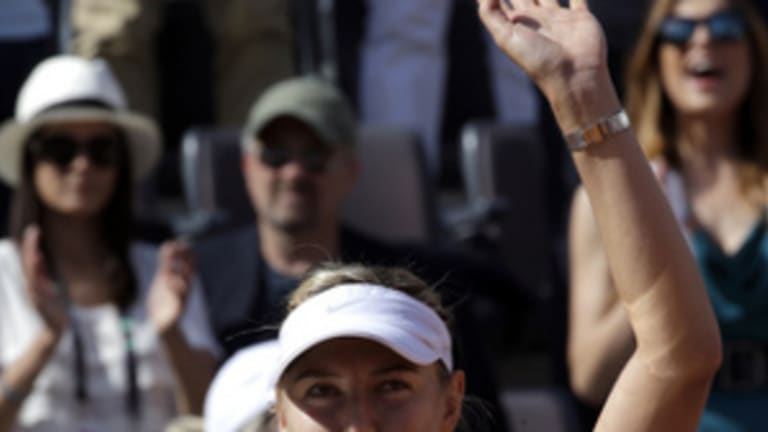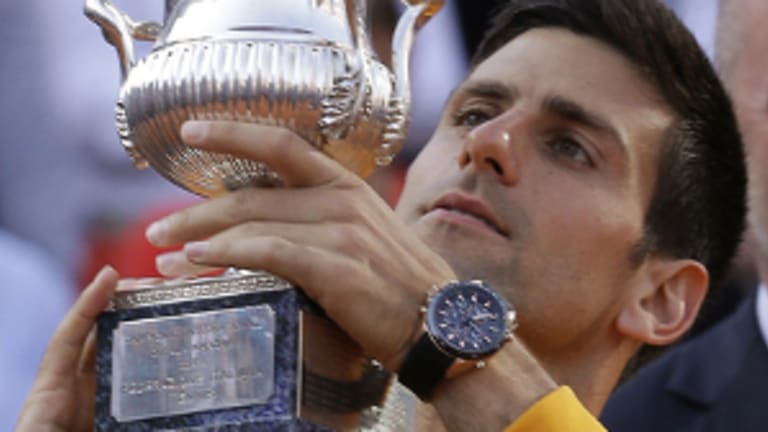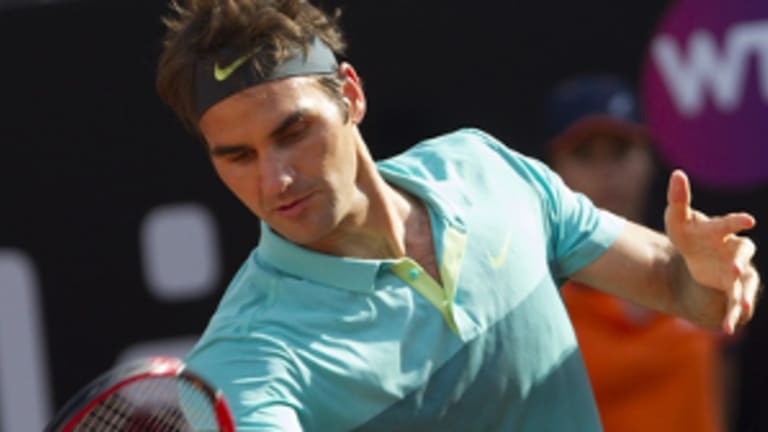Do tennis matches really have “turning points”? Can dozens of rallies be reduced to just one or two or three? It might seem like a hopelessly simplistic and clichéd concept, but watching Maria Sharapova’s 4-6, 7-5, 6-1 win over Carla Suarez Navarro in the Rome women's final on Sunday, it wasn’t hard to identify the moment when the match fell out of the Spaniard’s grasp and into the Russian’s.
“Point” is too specific in this case. The final turned over the course of one game, when Sharapova served at 3-3 in the second set. Until then, Suarez Navarro had been the better player. She had controlled the rallies with her sharply-angled ground strokes, more than once forcing a desperate Sharapova to reach for her backhand with only her left hand. As for her own game, Sharapova pressed from the ground and struggled with her serve. After carving out a brief early lead at 3-1 in the second, she gave the break right back with a double fault.
Now the second set was even at 3-3, and the famously resolute Sharapova was wobbling. On the first point, a Suarez Navarro forehand appeared to be heading out, but dropped into the corner for a surprise winner; Sharapova’s head dropped with it. Two points later, Sharapova was down 15-30; she missed her first serve, but somehow managed to put her second serve into the body of Suarez Navarro, who drilled her best shot, her backhand, into the net—with that shot, she had essentially helped Sharapova get back on her feet. Two more times in that game, once at 30-all and once on break point, Suarez Navarro made similar donations from her forehand side. Sharapova held, and went on to win 10 of the last 13 games.
Turning points, or turning games, typically happen when the underdog, who has started the day with little to lose, suddenly finds herself with something to lose. One set isn’t enough to make this happen, but a set and a break is. If you get that far ahead and you don’t end up winning, the assumption afterward will be that at some level you choked—or, at the very least, gave the win back to your opponent. Suarez Navarro, the underdog, with a chance to win the biggest title of her career at age 26, was one point away from going up a set and a break when her elbow turned to concrete.
After that, Sharapova had the advantage. While she didn’t break free and play her best tennis until she was racing down the homestretch, her superior power and court positioning gradually wore her weary opponent down. Suarez Navarro had played a long three-setter against Simona Halep the previous day, and it showed in the late stages of the final.


